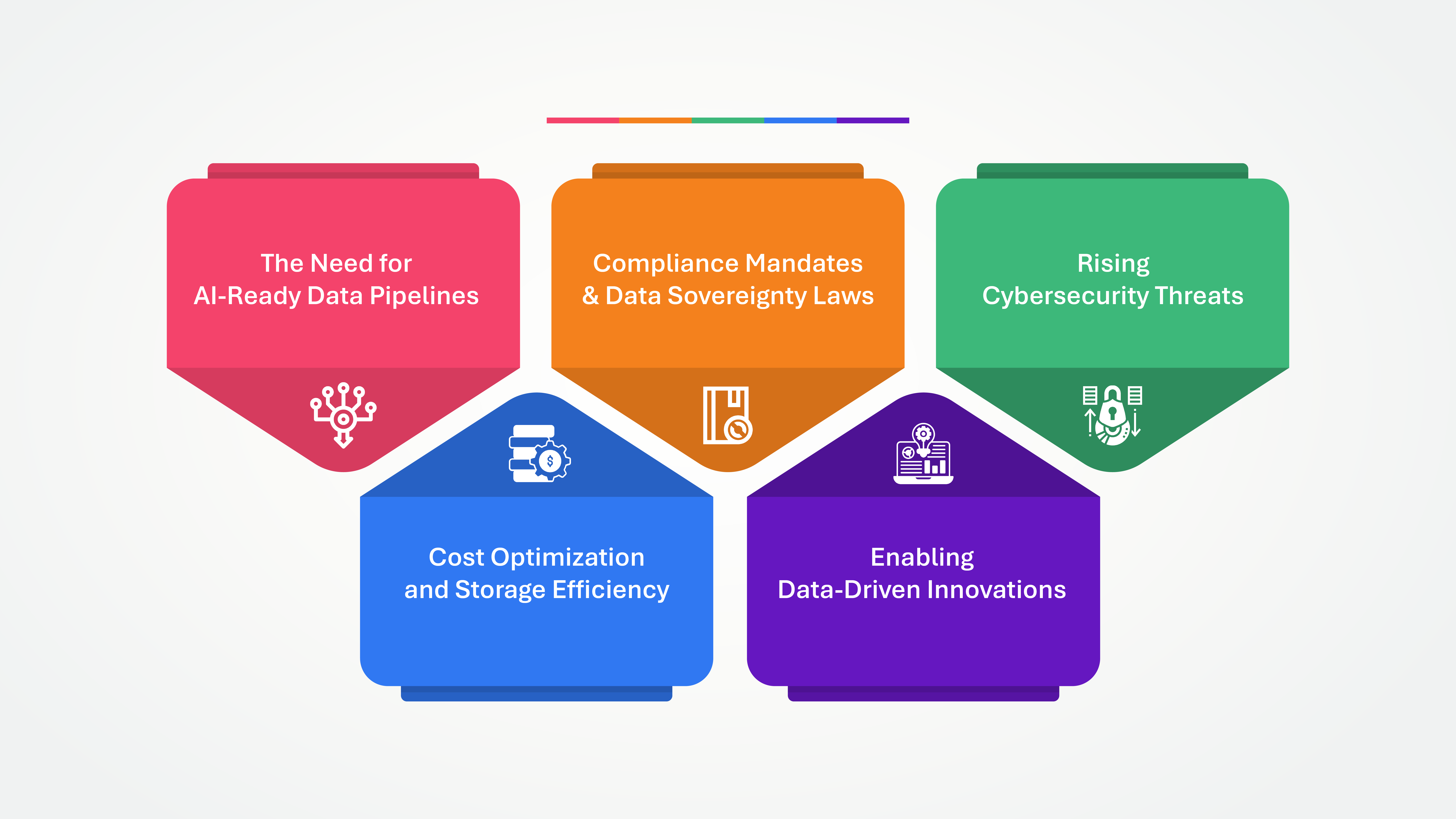In an era defined by AI and exponential data growth, unstructured data management has emerged as both a significant challenge and an unparalleled opportunity. With over 90% of the world’s data created in the last two years alone, the rate of growth shows no signs of slowing. However, Gartner warns that by 2027, 60% of organizations will fail to manage unstructured data effectively, leading to inefficiencies, heightened regulatory risks, and missed innovation opportunities.
What is Unstructured Data?
Unstructured data encompasses emails, videos, medical images, IoT sensor outputs, and more—accounting for up to 80% of enterprise data. Unlike structured data stored in predefined formats, unstructured data is heterogeneous, complex, and often difficult to search, analyze, and utilize. This data often becomes “dark data”—untapped and underutilized assets that could otherwise drive immense value.Industries such as healthcare, banking, and retail are already grappling with the implications of poor unstructured data management. For instance, healthcare organizations struggle to extract actionable insights from unstructured medical records, while banks face compliance risks from unmanaged communications. According to IBM, data breaches cost companies an average of $4.88 million in 2024, with unstructured data frequently at the heart of these vulnerabilities.
Key Drivers Making Unstructured Data Management Essential

1. The Need for AI-Ready Data Pipelines
Unstructured data is the backbone of advanced AI-driven solutions, but its disorganized nature makes integration into AI workflows challenging. Current statistics reveal that data scientists spend over 60% of their time on data preprocessing, hampering innovation timelines. Challenges include missing metadata, inconsistent formats, and duplicate records, which impair model accuracy and scalability. Addressing these issues requires automated tools for metadata extraction, entity recognition, and format normalization. Techniques like schema-on-read for JSON files or natural language processing for text mining can streamline pipelines, ensuring clean, AI-ready datasets that reduce time-to-value for AI models.
2. Compliance Mandates and Data Sovereignty Laws
With regulations such as GDPR, CCPA, and the proposed U.S. Data Privacy Act, non-compliance risks have evolved from a regulatory concern to a strategic imperative. Fines under GDPR alone can reach up to €20 million or 4% of global annual revenue, underscoring the stakes. Effective management of unstructured data includes leveraging data classification algorithms to identify personally identifiable information (PII) and sensitive content embedded within emails, multimedia files, and logs. Advanced tools such as data loss prevention (DLP) systems and content-based access controls (CBAC) enable real-time compliance monitoring and automated redaction of sensitive information before breaches occur.
3. Rising Cybersecurity Threats
By 2024, cybercrime damages are expected to hit $9.5 trillion globally, a stark reminder of the vulnerabilities in poorly managed unstructured data. Cybercriminals exploit weaknesses such as open shares, stale files, and improperly secured backups to exfiltrate data. Robust unstructured data management frameworks employ file activity monitoring, anomaly detection algorithms, and zero-trust architectures to minimize vulnerabilities. Techniques like encryption at rest and in transit, combined with real-time access analytics, can proactively detect and thwart breaches, while maintaining operational agility.
4. Cost Optimization and Storage Efficiency
Unstructured data, growing at a rate of 55-65% per year, often includes ROT (redundant, obsolete, and trivial) data that inflates storage costs unnecessarily. Without effective management, organizations risk spending upwards of 30% more on data storage than required. Automated tools for data deduplication, tiered storage solutions, and policy-driven archiving are pivotal. For example, hot vs. cold storage tiers can ensure that frequently accessed data resides on high-performance systems, while historical or infrequently accessed data is stored in cost-effective archives. Furthermore, metadata analytics can identify usage patterns, enabling smarter storage utilization.
5. Enabling Data-Driven Innovations
Organizations that effectively harness unstructured data achieve an additional 4% annual organic revenue growth compared to peers. This edge stems from leveraging insights embedded in social media, multimedia, IoT devices, and customer sentiment analysis. Advanced techniques such as video analytics for consumer behavior prediction, image recognition in retail for personalized marketing, or text analysis on customer reviews foster innovative approaches to problem-solving. By integrating technologies like graph databases to uncover relational patterns and machine learning models for predictive insights, companies can transform unstructured data into actionable intelligence, driving product and service innovation.
Industry Trends Shaping Unstructured Data Management
- AI-Driven Insights
By 2025, over 75% of enterprises are expected to deploy AI-based tools to analyze unstructured data. These tools provide real-time insights, enabling organizations to uncover hidden opportunities in customer communications, IoT logs, and beyond.
- Edge and Decentralized Data
The proliferation of IoT devices has driven an explosion of data generated at the edge. Edge computing reduces latency and bandwidth usage by processing data closer to its source, making decentralized data management critical for real-time applications.
- Regulatory-Driven Governance
The introduction of stringent data privacy laws, including GDPR and India’s DPDP Act, underscores the necessity of robust governance frameworks to mitigate compliance risks and avoid hefty fines.
- Data Security Posture Management (DSPM)
Unstructured data often resides in silos, creating vulnerabilities to cyberattacks. DSPM solutions are becoming essential for assessing and dynamically managing the security posture of unstructured data repositories.
- Hybrid and Multi-Cloud Flexibility
Organizations are increasingly adopting hybrid and multi-cloud strategies, necessitating unstructured data management solutions that ensure seamless scalability, interoperability, and security across diverse environments.
Getting Started with Data Dynamics:
- Learn about Unstructured Data Management
- Schedule a demo with our team
- Read the latest IDC Spotlight Paper – Rethinking Data Security: Improving Privacy and Compliance with a Shared Approach






